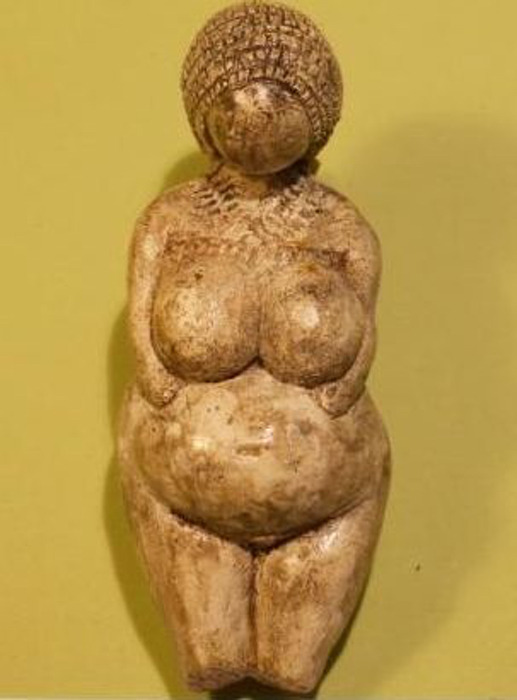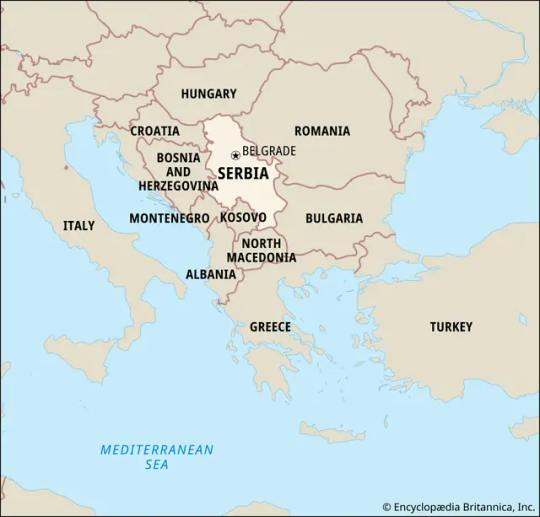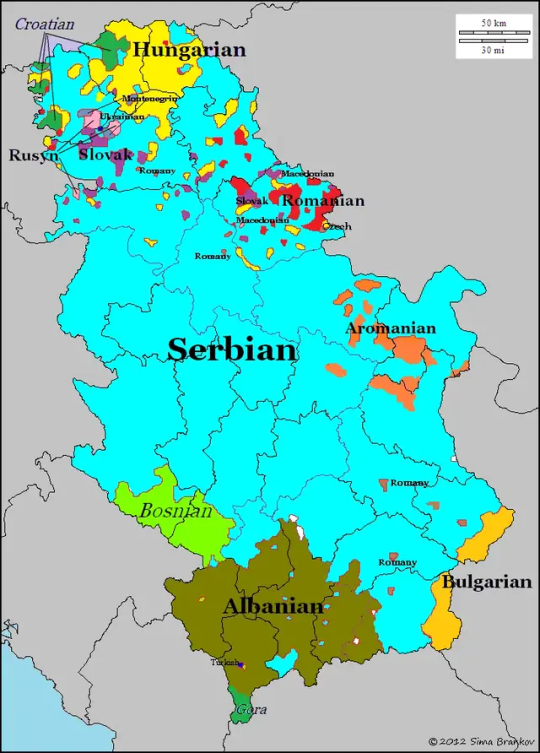#epigravettian
Explore tagged Tumblr posts
Text

Epigravettian Culture: this culture led the way into the European Mesolithic in its core territory in the Carpathian basin, emerging around three and-a-half millennia after the recognised end of the Gravettian.
#history#historyfiles#archaeology#ancient world#epigravettian#mesolithic#prehistory#european mesolithic#carpathians#gravettian#europe#ancient history#ancient europe
3 notes
·
View notes
Text

"The so-called "Venus of Kostenki" was recovered from one of the Paleolithic sites on the Don River in Russia. Several figurines from this area share the same traits and indicate a single goddess who is encountered not just in Russia but throughout prehistoric Europe and the Near East. Her commonalities in so many figurines include the largeness of breasts, belly, thighs, and buttocks; a globe of a head with closely plated hair or more likely a knitted cap; and arms folded under breasts. Of subtler recurrence, least often remarked upon but of signal importance, is how often her head is tipped downward, not skyward, for the afterlife is not in the sky but in her own womb, the womb of the fatted earth. She is additionally faceless, as the Goddess in her wholeness is unknowable. This is the standard appearance of the Kostenki goddess figurines; but how nearly identical she is to prehistoric figurines from France to Israel is what startles. It is now known that a series of prehistoric societies were extremely far-ranging in their influences, amounting to a vast society of roaming hunter-gatherers. The last of these cultures has been named the Gravettian, the mammoth hunters who built sturdy shelters of mammoth bones to stand against even Ice Age storms, or dwelt in caves or semi-underground habitations. They were not a settled culture but did have centers revisited seasonally or periodically, ritual sites or encampments along the trails of migratory animals. Gravettian art dates from 25,000 to 20,000 BCE or older in Europe (and the Kostenki sites in use from about 37,000 BCE). This surprisingly was a unified culture that lasted a minimum of 5,000 years, with lingering elements until 17,500 BCE, and influences on the following Epigravettian era in Spain, Italy, France, the Balkans and Ukraine. Their goddess figurines were small because a nomadic existence required portability. When the Ice Age ended, Gravettian culture begins its slow fade into settled agricultural societies, the first cities, the earliest of which still created heavy-set faceless goddess figurines."
~ Jessica Amanda Salmonson
#Venus of Kostenki#Jessica Amanda Salmonson#sacred ways#ancient ways#Goddess#Paleolithic#Don River#Russia#Europe#goddess figurines#Gravettian Culture#25#25000 to 20000 BCE#37000 BCE#Epigravettian#Spain#Italy#France#the Balkans#Ukraine
20 notes
·
View notes
Text

The graffiti of Addaura, carved by ancient humans between 20,000-15,000 BC in the late Epigravettian and early Mesolithic periods. They were found in the Addaura Cave on the northeast side of Mount Pellegrino in Palermo, Sicily.
#painting#abstraction#painters painting#abstract painting#art studio#collage#the painting space#art#photography
156 notes
·
View notes
Text
Splatoon: The Vestigial Species - Design Ideas (Europe)
If you have not viewed the main post first, please do so. Otherwise, here is a list of archaeological cultures which you are free to choose from to use as an inspiration when designing your human society!
Paleolithic/Mesolithic
Bohunician Culture
Aurignacian Culture
Gravettian Culture
Epigravettian Culture
Solutrean Culture
Magdalenian Culture
Azilian Culture
Maglemosian Culture
Kongemose Culture
Ertebølle Culture
Dnieper-Donets Culture
Pitted Ware Culture
Neolithic
Sesklo Culture
Neolithic Greece
Starčevo–Körös–Criș Culture
Vinča Culture
Karanovo Culture
Gumelniţa Culture
Linear Pottery Culture
Stroke-Ornamented Ware Culture
Rössen Culture
Lengyel Culture
Cardium Pottery Culture
Cucuteni-Trypillia Culture
Michelsberg Culture
Funnelbeaker Culture
Tisza Culture
Globular Amphora Culture
Ozieri Culture
Baden Culture
Bronze Age
-Pastoral
Samara Culture
Khvalynsk Culture
Repin Culture
Yamnaya Culture
Catacomb Culture
Vučedol Culture
Poltavka Culture
Fatyanovo Culture
Abashevo Culture
Sintashta Culture
Srubnaya Culture
-Sedentary
Corded Ware Culture
Bell Beaker Culture
Únětice Culture
Tumulus Culture
Nordic Bronze Age
Terramare Culture
Apennine Culture
Wessex Culture
Atlantic Bronze Age
Hallstatt Culture
Urnfield Culture
Helladic Culture
Cycladic Culture
-Civilizations
Minoan Civilization
Mycenaean Civilization
#splatoon#splatoon 2#splatoon 3#splatoon 4#splatoon headcanon#splatoon fandom#splatoon art#splatoon fanart#fan concept#art contest#collaborative projects#art collab
5 notes
·
View notes
Text
This essay is gnawing at my bones similar to how the mammoth bones in the Epigravettian period were gnawed by carnivores after the temporary mammoth-hunting campsite at Yudinovo, Russian Plain, was abandoned, leading some archaeologists to believe that the people of the Epigravettian were scavengers, taking meat from natural mammoth death sites instead of actively hunting mammoths
2 notes
·
View notes
Text
Venus Figurine or Abstract Art?

This 15,000-year-old bone pendant was found in Vlakno Cave, in Croatia. It may be a late type of Venus figurine, such as the famous Venus of Willendorf, which dates to more than 24,000 years ago. Venus figurines might have evolved over those 9,000 years, become more abstract and less realistic.
The geometric pattern on the bone is similar to patterns on other pieces of art from the Epigravettian period, a late Paleolithic culture on the European side of the Mediterranean. And similar examples of Epigravettian female figurines have been found in Dolni Vestovice in the Czech Republic and Mal'ta in Russia.
164 notes
·
View notes
Text
Discovering the world
Serbia 🇷🇸
Basic facts
Official name: Република Србија, Republika Srbija (Republic of Serbia)
Capital city: Belgrade
Population: 6.7 million (2023)
Demonym: Serbian
Type of government: unitary parliamentary republic
Head of state: Aleksandar Vučić (President)
Head of government: Miloš Vučević (Prime Minister)
Gross domestic product (purchasing power parity): $173.07 billion (2023)
Gini coefficient of wealth inequality: 33.3% (medium) (2019)
Human Development Index: 0.805 (very high) (2022)
Currency: Serbian dinar (RSD)
Fun fact: Serbian is the only digraphic language in Europe, as it uses both the Cyrillic and Latin alphabets.
Etymology
The country’s name comes from the Serbs (Srbi), but the origin of this term is unclear. It may come from a Proto-Slavic word with the meaning of “family kinship” or from two Iranian words: *sar- (“head”) and *bai- (“to hit”).
Geography
Serbia is located in Southeast Europe and borders Hungary to the north, Romania to the northeast, Bulgaria to the southeast, North Macedonia to the south, Kosovo and Montenegro to the southwest, and Bosnia and Herzegovina and Croatia to the west.

There are four main climates: hot-summer humid continental in the north and parts of the east, humid subtropical in the north and parts of the south and southwest, subtropical highland in the northwest, and subarctic in parts of the southwest. Temperatures range from −3 °C (26.6 °F) in winter to 30 °C (86 °F) in summer. The average annual temperature is 12.2 °C (53.9 °F).

The country is divided into 29 administrative districts (upravni okrug). The largest cities in Serbia are Belgrade, Novi Sad, Niš, Kragujevac, and Subotica.

History
19000-8000 BCE: Epigravettian culture
13000-6000 BCE: Iron Gates Mesolithic
9500-5500 BCE: Lepenski Vir culture
6200-4500 BCE: Starčevo culture
5400-4500 BCE: Vinča culture
106 BCE-330 CE: Roman Empire
82 BCE-106 CE: Dacian Kingdom
330-1453 CE: Byzantine Empire
681-1018: First Bulgarian Empire
780-930: Principality of Serbia
10th century-1186: Kingdom of Duklja
1091-1217: Grand Principality of Serbia
1185-1396: Second Bulgarian Empire
1217-1346: Kingdom of Serbia
1346-1371: Serbian Empire
1371-1402: Principality of Moravian Serbia
1371-1412: District of Branković
1402-1442, 1444-1459: Serbian Despotate
1427-1521: Kingdom of Hungary
1459-1804: Ottoman Empire
1594: Uprising in Banat
1718-1739: Kingdom of Serbia
1686-1699: Habsburg occupation
1804-1813: First Serbian Uprising
1814: Hadži-Prodan’s rebellion
1815-1817: Second Serbian Uprising
1815-1882: Principality of Serbia
1849-1861: Austrian Empire
1882-1918: Kingdom of Serbia
1885: Serbo-Bulgarian War
1903: May Coup
1915-1918: Bulgarian occupation
1916-1918: Austro-Hungarian occupation
1918-1929: Kingdom of Serbs, Croats and Slovenes
1929-1941: Kingdom of Yugoslavia
1941: Republic of Užice
1941-1944: German occupation
1943-1945: Democratic Federal Yugoslavia
1945-1963: Federal People’s Republic of Yugoslavia
1963-1992: Socialist Federal Republic of Yugoslavia
1988-1989: Anti-bureaucratic Revolution
1992-2003: Federal Republic of Yugoslavia
1995-1998: insurgency in Kosovo
1998-1999: Kosovo War
1999-2001: insurgency in the Preševo Valley
2000: Bulldozer Revolution
2003-2006: Federal Republic of Yugoslavia
2006-present: Republic of Serbia
Economy
Serbia mainly imports from the European Union, China, and Türkiye and exports to the European Union, Bosnia and Herzegovina, and Montenegro. Its top exports are fruit, corn, and insulated electric conductors.
It has coal, copper, and gold deposits. Services represent 52% of the GDP, followed by industry (25.6%) and agriculture (6.5%).

Serbia is a member of the Council of Europe, the Organization for Security and Cooperation in Europe, and the Organization of the Black Sea Economic Cooperation.
Demographics
Serbs represent 84.4% of the population, followed by Hungarians (2.6%) and Bosniaks (2.2%). The main religion is Christianity, practiced by 86.6% of the population, 81.1% of which is Orthodox.

It has a negative net migration rate and a fertility rate of 1.6 children per woman. 57.1% of the population lives in urban areas. Life expectancy is 72.7 years and the median age is 43.1 years. The literacy rate is 98%.
Languages
The official language of the country is Serbian, native to 88% of the population, of which 47% favor the Latin alphabet and 36% the Cyrillic one. Recognized minority languages include Albanian, Bulgarian, Hungarian, Macedonian, Romanian, Rusyn, and Slovak.

Culture
Serbs are very blunt and direct, which may come across as rude to foreigners. Each family has one patron saint that they venerate on their feast day.
Men wear a white shirt, a vest (štofani), baggy pants (čakšire), flat leather shoes (opanci), and a V-shaped cap (šajkača). Women wear an embroidered white blouse, a vest (jelek), a wide skirt (suknjerac), an apron, and opanci.

Architecture
Traditional houses in Serbia have stone, whitewashed walls, tile roofs, and porches.

Cuisine
The Serbian diet is based on bread, meat, and vegetables. Typical dishes include karađorđeva šnicla (a breaded rolled steak stuffed with cheese, cream, and ham), mućkalica (a spicy stew of peppers, pork, and tomatoes), pljeskavica (a ground meat patty served with beans, fries, milk cream, and onions), Srpska salata (cucumber, onion, and tomato salad), and vasina torta (a sponge cake with cream made of chocolate, oranges, and walnuts).

Holidays and festivals
Like other Christian countries, Serbia celebrates Orthodox Christmas Day, Good Friday, and Easter Monday. It also commemorates New Year’s Day and Labor Day (two days each).
Specific Serbian holidays include Statehood Day on February 15 and 16 and Armistice Day on November 11.

Statehood Day
Other celebrations include the International Trumpet Festival, the Kupusijada, which revolves around cabbage, and the Lovefest, which involves love and music.

Kupusijada
Landmarks
There are four UNESCO World Heritage Sites: Gamzigrad-Romuliana, Palace of Galerius, Stari Ras and Sopoćani, Stećci Medieval Tombstones Graveyards, and Studenica Monastery.

Studenica Monastery
Other landmarks include the Đerdap National Park, the Gardoš Tower, the Šar Mountains National Park, the Smedervo Fortress, and the Temple of Saint Sava.

Đerdap National Park
Famous people
Aleksandra Radović - singer
Meša Selimović - writer
Miki Manojlović - actor
Milena Pavlović-Barili - painter and poet
Monica Seles - tennis player
Nataša Stanković - actress and model
Nikola Tesla - engineer and inventor
Novak Djokovic - tennis player
Tijana Bošković - volleyball player
Željko Joksimović - singer

Tijana Bošković
You can find out more about life in Serbia in this article and this video.
7 notes
·
View notes
Photo




Băile Herculane, Romania
Băile Herculane (Latin: Aqua Herculis) is a town in Romanian Banat, in Caraș-Severin County, situated in the valley of the Cerna River, between the Mehedinţi Mountains to the east and the Cerna Mountains to the west, elevation 168 meters.
The spa town of Băile Herculane has a long history of human habitation. Numerous archaeological discoveries show that the area has been inhabited since the Paleolithic era. The Peștera Hoților (Cave of the Thieves), contains multiple levels, including one from the Mousterian period, one from the Mesolithic period (late Epigravettian) and several from the later Neolithic periods.
Legend has it that the weary Hercules stopped in the valley to bathe and rest. Unearthed stone carvings show that visiting Roman aristocrats turned the town into a Roman leisure center. Six statues of Hercules from the time have been discovered. A bronze replica of one of them, molded in 1874, stands as a landmark in the town center. Austrian and Ottoman troops clashed here after the Ottoman victory in the battle of Mehadia on 30 August 1788. The Ottomans won the skirmish, took the town on 7 September 1788 and advanced to Caransebeș. It was retaken by the Austrians at the end of September 1789.
In modern times, the spa town has been visited for its supposedly natural healing properties: hot springs with sulfur, chlorine, sodium, calcium, magnesium and other minerals, as well as negatively ionized air.
#aka one of my fave places on earth#there's so much forest and it's so isolated and quiet and the hiking trails are fantastic imo#i selfishly don't want it to become more popular.#romania#baile herculane#mine#visual
44 notes
·
View notes
Text

Shpan Culture: in the Dryas III-Preboreal, human groups survived in Mesolithic southern Ukraine as part of the Epigravettian-led Shpan culture.
#history#historyfiles#mesolithic#ancient world#ancient europe#archaeology#shpan#epigravettian#dryas#preboreal#humans#ukraine
2 notes
·
View notes
Text

"The so-called "Venus of Kostenki" was recovered from one of the Paleolithic sites on the Don River in Russia. Several figurines from this area share the same traits and indicate a single goddess who is encountered not just in Russia but throughout prehistoric Europe and the Near East.
Her commonalities in so many figurines include the largeness of breasts, belly, thighs, and buttocks; a globe of a head with closely plated hair or more likely a knitted cap; and arms folded under breasts.
Of subtler recurrence, least often remarked upon but of signal importance, is how often her head is tipped downward, not skyward, for the afterlife is not in the sky but in her own womb, the womb of the fatted earth. She is additionally faceless, as the Goddess in her wholeness is unknowable.
This is the standard appearance of the Kostenki goddess figurines; but how nearly identical she is to prehistoric figurines from France to Israel is what startles. It is now known that a series of prehistoric societies were extremely far-ranging in their influences, amounting to a vast society of roaming hunter-gatherers.
The last of these cultures has been named the Gravettian, the mammoth hunters who built sturdy shelters of mammoth bones to stand against even Ice Age storms, or dwelt in caves or semi-underground habitations. They were not a settled culture but did have centers revisited seasonally or periodically, ritual sites or encampments along the trails of migratory animals.
Gravettian art dates from 25,000 to 20,000 BCE or older in Europe (and the Kostenki sites in use from about 37,000 BCE). This surprisingly was a unified culture that lasted a minimum of 5,000 years, with lingering elements until 17,500 BCE, and influences on the following Epigravettian era in Spain, Italy, France, the Balkans and Ukraine.
Their goddess figurines were small because a nomadic existence required portability. When the Ice Age ended, Gravettian culture begins its slow fade into settled agricultural societies, the first cities, the earliest of which still created heavy-set faceless goddess figurines."
~ Jessica Amanda Salmonson
#Venus of Kostenki#figurine#ancient ways#sacred ways#goddess#goddess figurines#Gravettian culture#Jessica Amanda Salmonson#Paleolithic#Don River#Russia#Kostenki goddess figurines#37000 BCE#Epigravettian era#Spain#Italy#France#The Balkans#Europe#Prehistoric
8 notes
·
View notes
Text

Anetivka Technology: the people of the Epigravettian-led Anetivka flint-knapping technology of the late Palaeolithic were broken up by changes enforced by the Dryas III-Preboreal period in the north-western Black Sea region.
#history#historyfiles#ancient world#archaeology#mesolithic#european mesolithic#ancient europe#epigravettian#anetivka#flint knapping#black sea#preboreal#dryas
2 notes
·
View notes